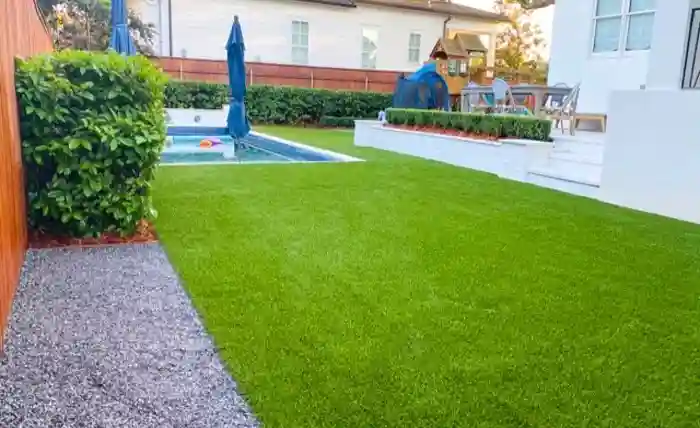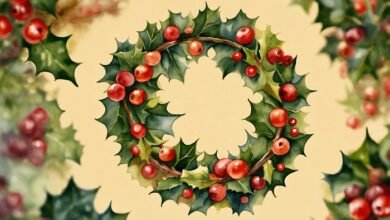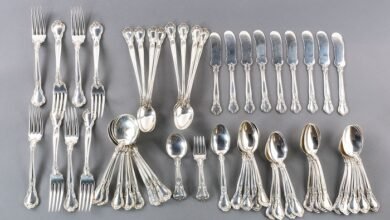Turf: An Overview of the Grass and its Uses

Turf is a term that refers to the surface layer of land that consists of grass and the soil in which its roots grow. Turf can also be used to describe a piece of land that is covered with grass, or a piece of grass that is cut from the ground and is usually rectangular. Turf has various applications and benefits, such as landscaping, sports, agriculture, and environmental protection. In this article, we will explore the different types of turf, how they are produced and maintained, and what are their advantages and disadvantages.
Read more about: kayo anime
Types of Turf
There are two main types of turf: natural and artificial. Natural turf is the grass that grows naturally on the land, while artificial turf is the synthetic material that mimics the appearance and function of natural grass.
Natural turf can be classified into two categories: cool-season and warm-season. Cool-season grasses are adapted to temperate climates and grow best in spring and fall. They include species such as Kentucky bluegrass, perennial ryegrass, tall fescue, and bentgrass. Warm-season grasses are adapted to tropical and subtropical climates and grow best in summer. They include species such as Bermuda grass, zoysia grass, St. Augustine grass, and bahia grass.
Read more about: kikoff
Artificial turf can be classified into three generations: first-generation, second-generation, and third-generation. First-generation artificial turf was introduced in the 1960s and consisted of short nylon fibers that were attached to a foam backing. It was mainly used for indoor sports such as baseball and football. Second-generation artificial turf was developed in the 1970s and consisted of longer polypropylene fibers that were tufted into a rubber or sand base. It was mainly used for outdoor sports such as soccer and hockey. Third-generation artificial turf was introduced in the 1990s and consisted of even longer polyethylene fibers that were infilled with rubber or sand granules. It was designed to resemble natural grass more closely and to provide better cushioning and drainage.
Read more about yandex games
Production and Maintenance of Turf
Natural turf can be produced by two methods: seeding and sodding. Seeding involves sowing grass seeds on prepared soil and watering them until they germinate and establish. Seeding is cheaper and more flexible than sodding, but it takes longer and requires more care. Sodding involves laying pre-grown grass mats on prepared soil and watering them until they root. Sodding is more expensive and less flexible than seeding, but it provides instant results and requires less maintenance.
Get the latest updates, scores, and highlights from thrilling kabaddi matches. Stay informed about the action and key moments in kabaddi!
Natural turf requires regular maintenance to keep it healthy and attractive. Maintenance activities include mowing, watering, fertilizing, weeding, aerating, dethatching, overseeding, topdressing, pest control, disease control, etc. The frequency and intensity of maintenance depend on the type of grass, the climate, the soil, the use, and the preference of the owner.
Artificial turf can be produced by various processes that involve extruding, weaving, tufting, coating, cutting, stitching, etc. The quality and durability of artificial turf depend on the materials, techniques, standards, etc. used in its production.
Read more about: sinuano noche
Artificial turf requires less maintenance than natural turf but still needs some care to keep it clean and safe. Maintenance activities include brushing, raking, sweeping, vacuuming, washing, disinfecting, repairing, replacing etc. The frequency and intensity of maintenance depend on the type of artificial turf, the use, the wear-and-tear etc.
Read more about yandex games
Advantages and Disadvantages of Turf
Turf has various advantages and disadvantages depending on its type and use. Some of the common advantages are:
- Turf provides a green and pleasant aesthetic that enhances the appearance and value of a property.
- Turf provides a soft and comfortable surface that reduces injuries and fatigue for people who walk or play on it.
- Turf provides a natural cooling effect that lowers the temperature and humidity of the surrounding air.
- Turf provides a natural filtration system that absorbs water runoff reduces erosion improves soil quality prevents flooding etc.
- Turf provides a natural habitat for wildlife such as birds insects worms etc.
Some of the common disadvantages are:
- Turf requires a lot of resources such as water energy labor chemicals etc. to produce maintain etc.
- Turf generates a lot of waste such as clippings trimmings etc. that need to be disposed or recycled.
- Turf may cause environmental problems such as water pollution air pollution greenhouse gas emissions etc.
- Turf may cause health problems such as allergies infections injuries etc.
- Turf may cause social problems such as conflicts disputes vandalism etc.
Discover the latest updates, trends, and insights on crypto pur, your go-to source for all things cryptocurrency and blockchain technology.
Read more about: guiterly
Conclusion
Turf is a term that refers to the surface layer of land that consists of grass and the soil in which its roots grow. Turf can also be used to describe a piece of land that is covered with grass, or a piece of grass that is cut from the ground and is usually rectangular. Turf has various applications and benefits, such as landscaping, sports, agriculture, and environmental protection. Turf can be classified into two main types: natural and artificial. Natural turf can be further classified into cool-season and warm-season grasses, while artificial turf can be further classified into three generations. Turf can be produced by two methods: seeding and sodding for natural turf, and various processes for artificial turf. Turf requires regular maintenance to keep it healthy and attractive. Maintenance activities vary depending on the type and use of turf. Turf has various advantages and disadvantages depending on its type and use. Turf provides a green and pleasant aesthetic, a soft and comfortable surface, a natural cooling effect, a natural filtration system, and a natural habitat for wildlife. However, turf also requires a lot of resources, generates a lot of waste, may cause environmental problems, may cause health problems, and may cause social problems.
Discover the latest on dinotube : reviews, features, and how it stands out in the world of online video streaming and entertainment.
Read more about: rajkotupdates.news



